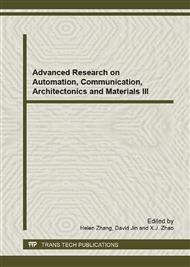p.61
p.67
p.73
p.78
p.83
p.87
p.92
p.97
p.103
Study on the Environmental Materials with the Enzyme-Producing Conditions of a PCBs-Degrading Halophilic Bacterium
Abstract:
Polychlorinated biphenyls (PCBs) are Persistent Organic Pollutants (POPs). This experiment screened a halophilic bacterium from the deep sea sediments, which could grow at the salinity of 15%, and designated as B2.6. The cells of this strain were rod shaped, Gram negative, motile, could grow in pH range of 5.0-9.0, and temperature range 10-37°C. Growth of this bacterium in the presence of PCBs, as the sole source of carbon and energy. The ions of IA, such as Na+ and K+ could enhance the activity of PCBs-degrading enzyme, while the transitional metal ions, such as Co2+, Mn2+, Cu2+, Fe2+ and Fe3+ may inhibit it in a certain degree. The optimal temperature, pH value and concentration of NaCl for the PCBs-degrading enzyme were 25-35°C, pH 6-8 and 50 g·L-1, respectively.
Info:
Periodical:
Pages:
83-86
Citation:
Online since:
August 2013
Authors:
Keywords:
Price:
Сopyright:
© 2013 Trans Tech Publications Ltd. All Rights Reserved
Share:
Citation:


